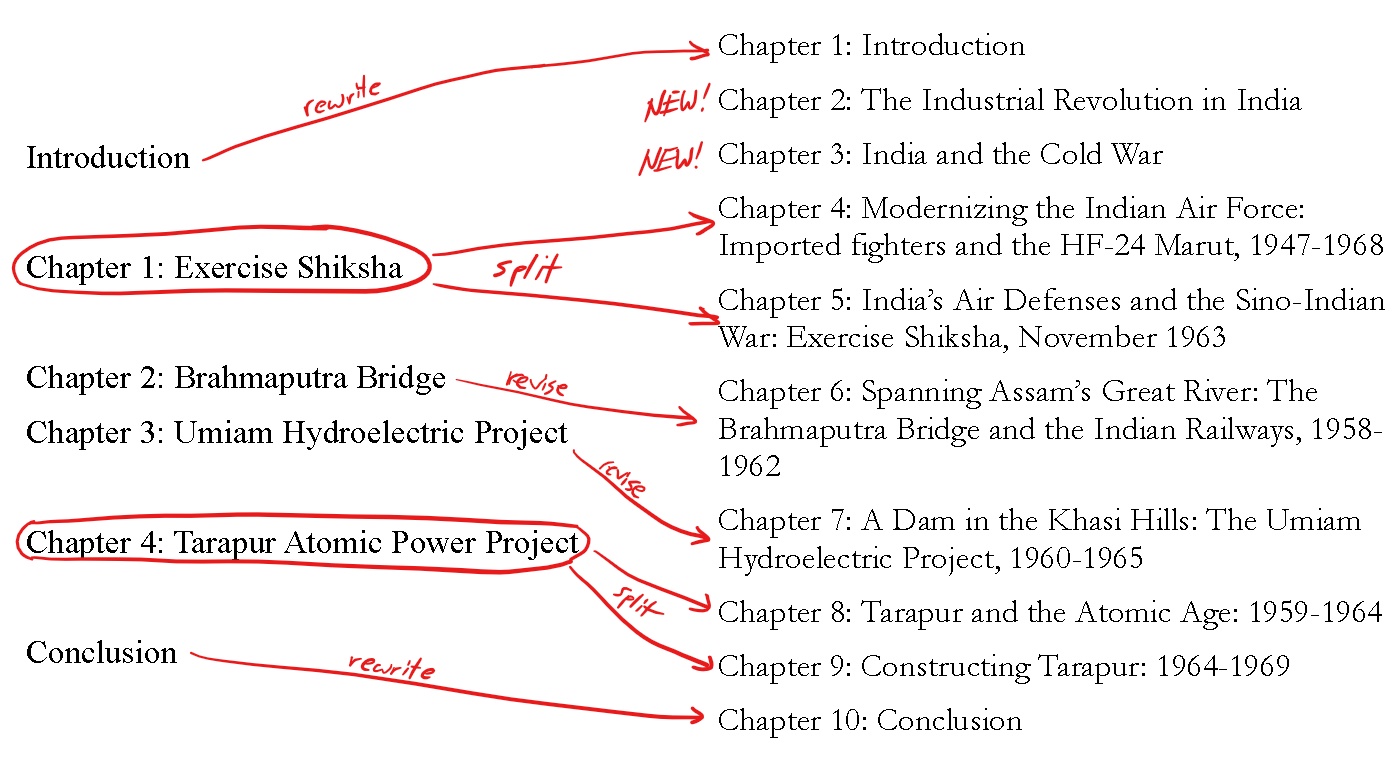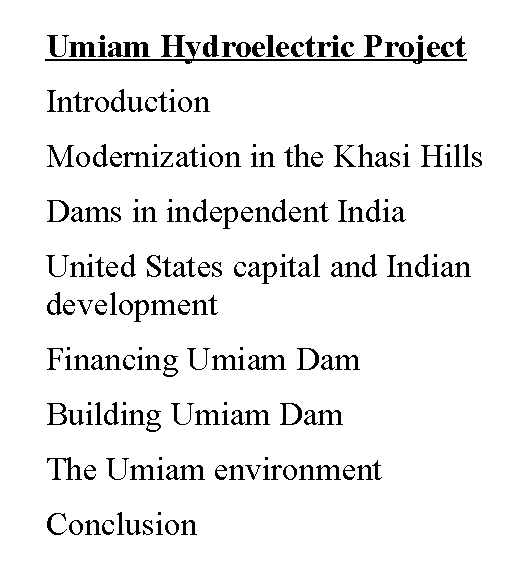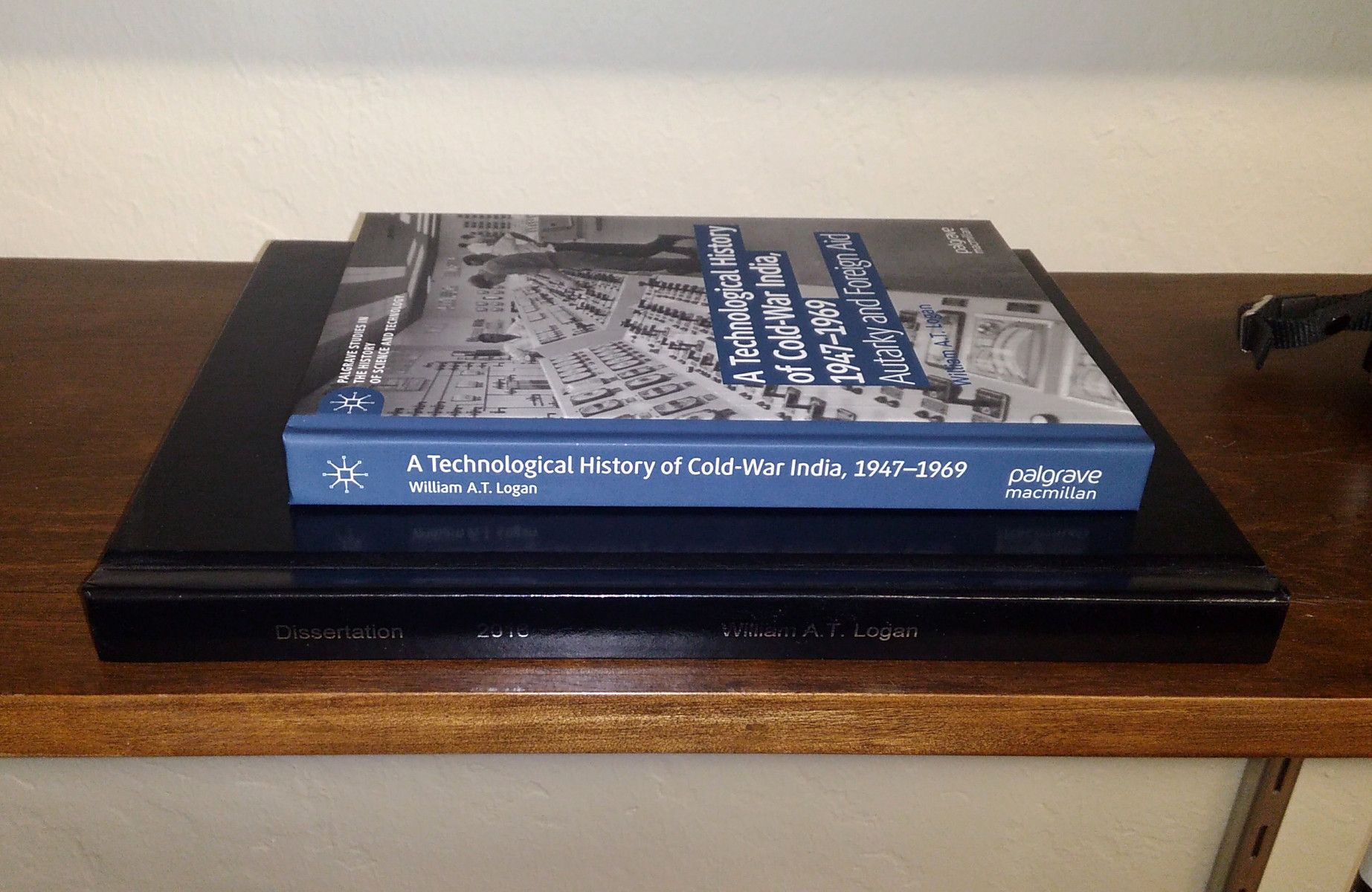
Working on Chapter 9 of A Technological History of Cold-War India in early 2020, supervised by a figurine of Chiang Kai-shek.
The book that I just published, A Technological History of Cold-War India, is the result of more than ten years of work. I started the project way back in my first year of graduate school. A couple of disparate papers that I wrote for graduate classes became the germ of my dissertation, which I finally completed and defended in 2016. Then it would take me another five years of on-and-off work to get from dissertation to published book.
Writing my dissertation—unlike the book—was actually a fairly straightforward process. While some people take years to write their dissertations, it took me only about four months of consistent, obsessive work to transform the disparate chapter drafts that I had written over my first five years of grad school into a coherent dissertation. At the beginning of my dissertating, I made a plan for what I would write each week for the next four months. Then I got to work and didn’t stop until I was done.
The challenge of writing a book
After defending my dissertation (and taking a much-needed break of several months), I set about turning my dissertation into a book. This proved to be much harder than writing the dissertation, and it took far longer—three and a half years until first draft for the book, rather than just four months for the dissertation.
There are a couple of reasons why writing the book took so much longer than the dissertation. One reason was that I wasn’t under very much pressure to get the work done. In graduate school, after my funding ran out, I had to pay several thousand dollars’ worth of continuing enrollment fees every semester until I graduated. These fees made me feel like I was sitting on a ticking time bomb as I wrote. For the book, on the other hand, the only deadline was five years after I graduated; at that time, my dissertation became publicly accessible on databases, so I wanted to have a book under contract by then. As it turned out, I completed the draft of my book and signed a publication contract for it almost a year before the five-year deadline.
The most significant reason why it took me so much longer to write the book is because writing a book is inherently harder than writing a dissertation. Dissertations are written to be read by literally only four people on planet Earth: the members of your dissertation committee (five people if you count your external reviewer). Books—even academic books that are rarely read outside of the ivory tower—have to appeal to a broader audience.
A useful guide in writing my book was From Dissertation to Book, by William Germano. I actually read the book once before I even wrote my dissertation, and then I read it again as I was starting to write my own book. Germano argues that, despite their superficial resemblance, dissertations and books are not the same thing, but are in fact different mediums of work. What works in one medium may not work in another. Screenwriters know this, which is why movies based on books are always different from the source material.
In the same way, as Germano explains, writing your first academic book is a process of adaptation from one medium to another. Your dissertation proves that your are an expert on your topic and deserve to be granted the elite title of Doctor of Philosophy. A book, on the other hand, has to make a meaningful contribution to scholarship. Dissertations tend to go very deep on an incredibly narrow topic. Books need to address a somewhat broader topic that will be of interest to more than four people; consequently, a book doesn’t have to go as deep into its topic.
The question of structure
Germano emphasizes the importance of structure for a book, and the need to modify the structure of your dissertation for the new medium of book. The table of contents of my dissertation looked like this:
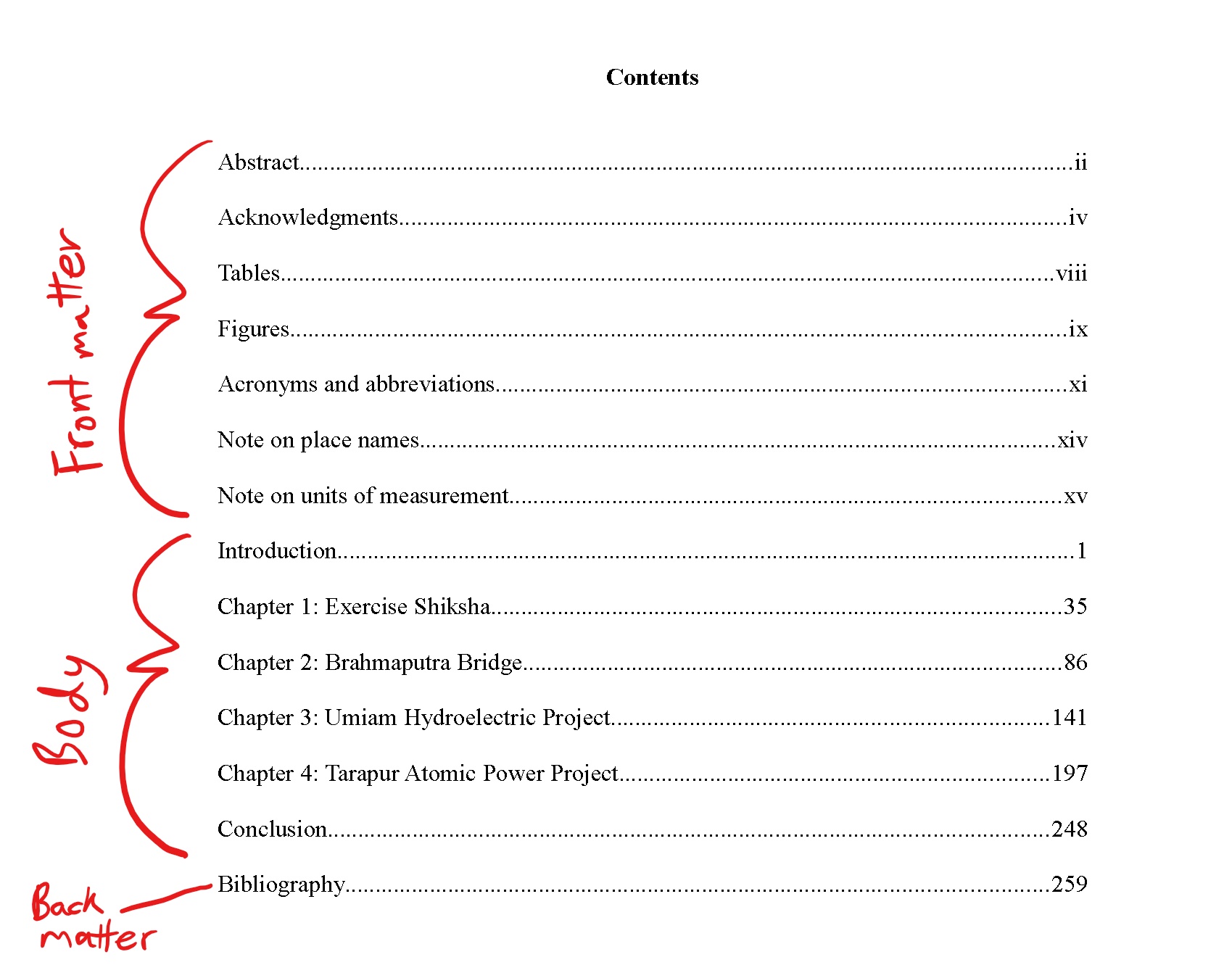
The table of contents of my dissertation, “Building Nonalignment: Technological Interchange and India’s Third Five-Year Plan (1961-1966)” (2016).
My dissertation was based on four case studies, and each of them had its own chapter. There was also a fairly long introduction (10,600 words) that introduced the main ideas of the dissertation, and a shorter conclusion (3,200 words) that brought the story closer to the present.
To introduce the topic to the readers, the book needed more context than the dissertation, and thus I added two chapters to the beginning, one about Indian technology, industry, and economics, and one about India in the Cold War. (I also added an all-new introduction, but it was shorter than the one in the dissertation, only 4,400 words.) The first new chapter repurposed some material from the original introduction, but by and large these chapters were new.
The case study about Exercise Shiksha (a joint Indo-US-UK air exercise held in North India in November 1963) was the first part of this project that I researched and wrote, way back in my first year of grad school. The chapter had always sort of confused me, but it was only when planning the book that I finally figured out why: it is in fact two different stories. The air exercise is one of the stories, but the other story is the Indian Air Force’s quest for modern fighter jets. In making the plan for my book, I split the Exercise Shiksha chapter into two separate chapters.
The chapter about Tarapur Atomic Power Project (India’s first commercial nuclear plant) had also been a little unwieldy. Because I had found so many documents about the project in the US National Archives (as well as some in the Indian National Archives), I had a great deal to say about the project, and the chapter was long. I ended up splitting that chapter into two as well—one chapter about the planning and international agreements for the project, the other about its construction and early operation.
The final chapter list thus ended up looking like this:
I went through a similar process in restructuring the individual chapters. One of the chapters that didn’t get split into two was Chapter 3 in the dissertation (Chapter 7 in the book), about the Umiam Hydroelectric Project, which was built in the Khasi Hills of Northeast India in the early sixties. The dissertation chapter had this structure:
The section “Modernization in the Khasi Hills” consisted mainly of deep-background material that I had included in my dissertation to prove my expertise in the topic. Since that level of detail is unnecessary in a book, I cut that section from the book and just preserved bits and pieces of it in other sections, including a new section called “A dam on Khasi land.”
“United States capital and Indian development” was a broad section that didn’t have anything to do with Umiam Dam. I moved parts of it to earlier chapters in the book (Chapters 2 and 3), and deleted the rest from this chapter.
“The Umiam environment” had been a miniature environmental history of Umiam Dam and its reservoir, but it had also gotten fairly off-topic by describing in great detail the tourism facilities at the lake operated by the Meghalaya Tourism Development Corporation Ltd. This had mainly served to pad out the dissertation, and it wasn’t really a part of the story I was trying to tell now. It got cut from the book as well.
Once I finished restructuring the chapter, it ended up looking like this:
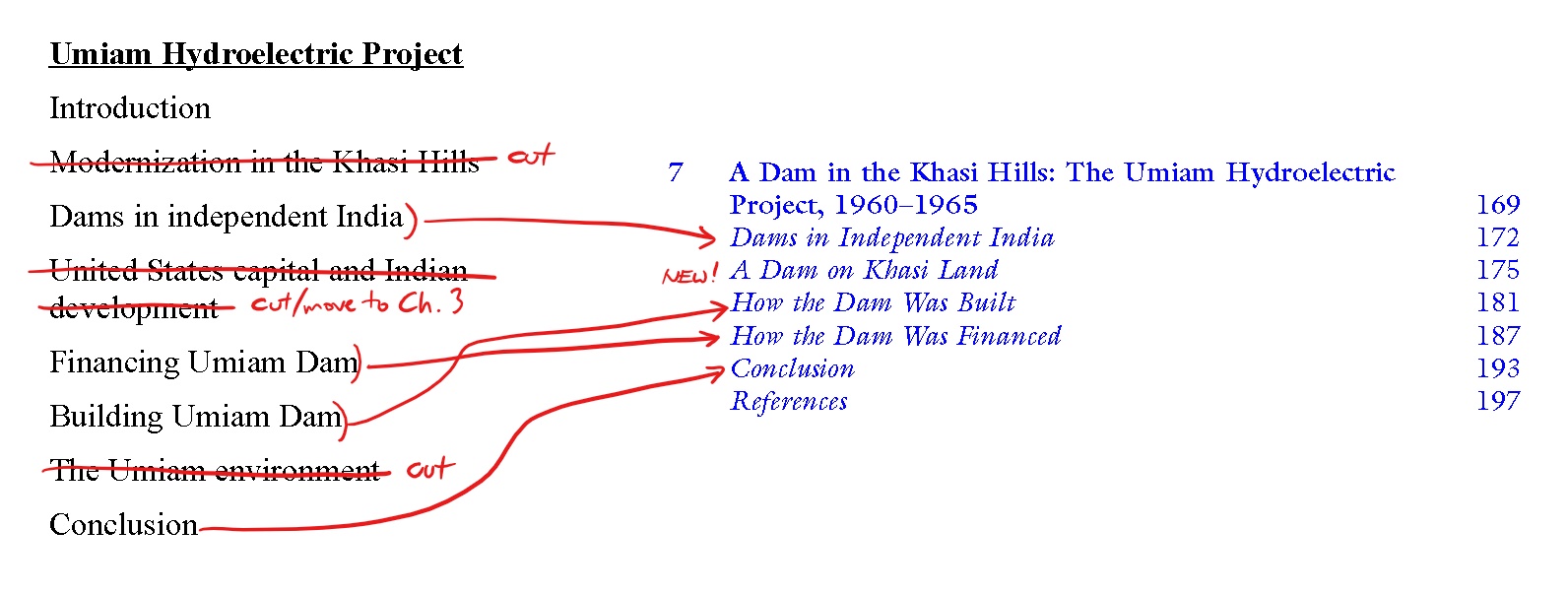
Comparison of the chapter outline of the Umiam Dam chapter in my dissertation (L) and its appearance in the table of contents of my published book (R).
To a greater or lesser extent, every chapter of the book had to be restructured so that it focused on the narrative that the book was trying to tell and didn’t get lost in the weeds of irrelevant details.
Edits large and small
Before starting to write the book, I read through my entire dissertation very carefully and made detailed notes on what I wanted to change in the book. This included little things like word choice and big things like structure and themes.
I collected these notes into a file called “Plans for adapting dissertation to book.” I prefaced the to-do list with six general guidelines for editing the text:
- Tone down discussions of theory and historiography, and restrict them to one section of the intro.
- Avoid the long, deep-background diversions that I included to show I was master of the topic. That’s what a dissertation is about, not a book.
- Similarly, eliminate most content notes, because they probably aren’t worth keeping if they don’t belong in the body.
- Add more people to the story. Characterize the people who are in there already.
- Add more imagery and descriptions.
- Use semicolons less.
I also started a file called “Concept,” in which I wrote out my basic ideas for the book. Items in the concept file included:
- Working title (I cycled through several bad ones until I settled on A Technological History of Cold-War India)
- Project codename: DTB [Dissertation-to-Book] (it was essential to have a codename because the title kept changing)
- Topic: Indian government attempts to industrialize the country and indigenize foreign technologies in the Cold War. A story of technology, economics, and international relations.
- Various versions of the Argument, including a super-succinct tweetable version!
I updated the Concept file continuously throughout the project, as I came up with ideas for how to improve the book.
Keeping on-track
When I started this project, I had no idea how long it was going to take. At first, I thought the project would take a year at most. When that year passed with many chapters left to rewrite, I kept telling myself that I would finish it the next summer, but summers came and went with little or no progress on the book.
As I mentioned before, one of the challenges for finishing this project was that I wasn’t motivated by the kind of pressure that I’d had during graduate school. I wasn’t losing thousands of dollars a semester if I didn’t finish the book in a timely manner. On the flip side, I also kept getting preoccupied by other kinds of work, mostly teaching new classes. I kept restarting the project, then stopping because I got overwhelmed by other work. Since I was getting paid to teach and not to write an unpublished book manuscript, the teaching took precedence.
It was also easy to get distracted with other projects. The vagaries of life made the sort of large-scale planning that worked for the dissertation impractical for the book. Instead, I found that the best way to make consistent progress on this project was to set a goal to work on it for a small but consistent amount of time every single working day for an academic term—usually 30 minutes. This wasn’t much, but over time it would add up and I could make real progress. I wrote whole chapters in 30-minute blocks of time over the course of several months. Sometimes I would have to drop even that, because I was too busy with my paid work, but even so this was one of the keys to finishing the book manuscript.
Reaching the end
I worked through each chapter sequentially before declaring it done and moving on to the next one. I started with the first full-length chapter (Chapter 2 in the published book), planning to circle back at the end and write the Introduction and Conclusion. Somebody told me in an English class long ago that this is how authors write books. I had done the same thing for my dissertation, and it seemed to work because my thoughts were more organized by the time I got back around to the Introduction.
When the COVID-19 pandemic began in early 2020, I was just finishing up the last full-length chapters, and it was about time to circle back to the Introduction. But then the pandemic hit North America with a vengeance and everything shut down within a couple of days. My institution shifted to online instruction in mid-March, just before winter quarter finals.
For a brief moment, I was thrilled at the prospect of teaching remotely, because I was convinced that this would give me the time to finish my book manuscript at last! But then when I actually started teaching online and realized how exhausting and time-consuming it really is, I decided that I was being delusional and should stop placing unrealistic expectations on myself. I tried working on the book for the first couple of weeks of spring quarter, but I gave up before long. (I think that many academics had a similar experience of being excited about making progress with their work during the pandemic before realizing that it was going to be hard enough just to survive in these trying times.)
In the end, the pandemic did help me finish my book manuscript, but not in the way that I had originally anticipated. When spring quarter 2020 ended, I was still stuck at home because the pandemic was still raging, but now I didn’t have much else to do besides work on my book. After a few false starts and much consistent work, I finished the first complete draft of my book in early July 2020. The draft was 86,000 words in length, some 7,000 words longer than the dissertation. It was the product of three and a half years of work.
The next step was getting this manuscript published—but that, my friends, is another story.

